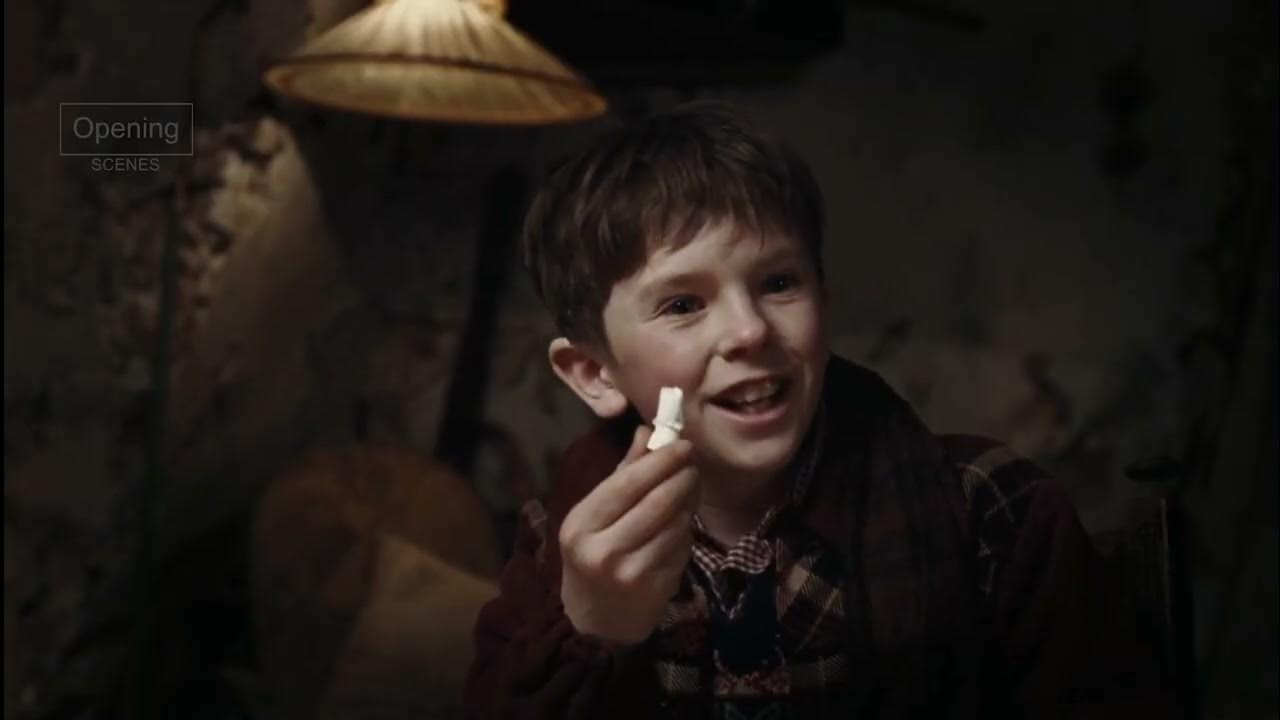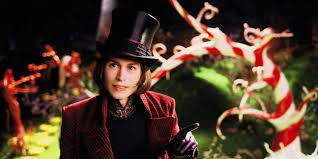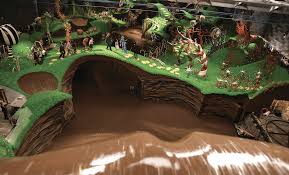🎬 Charlie and the Chocolate Factory (2005)

Charlie and the Chocolate Factory (2005) – A Whimsical Yet Dark Reimagining
Introduction
Tim Burton’s Charlie and the Chocolate Factory (2005) presents a visually stunning and uniquely dark reimagining of Roald Dahl’s beloved novel. With Johnny Depp portraying the eccentric Willy Wonka, this film brings a more introspective and psychologically complex take on the classic story. While some appreciated its artistic direction and deeper character exploration, others found its tone unsettling. Regardless, it remains a fascinating adaptation that continues to spark debate among fans and critics alike.
Plot Overview
The film follows young Charlie Bucket (Freddie Highmore), a kind-hearted boy from a poor family who wins a golden ticket to visit Willy Wonka’s mysterious and magical chocolate factory. Along with four other children—Veruca Salt, Violet Beauregarde, Augustus Gloop, and Mike Teavee—Charlie embarks on a fantastical journey filled with surreal landscapes and bizarre tests of character.
Unlike previous adaptations, this version delves into Wonka’s backstory, exploring his childhood trauma with his strict dentist father (Christopher Lee), which adds depth to his eccentricities and his aversion to human connection. As the children face consequences for their flaws, Charlie’s humility and good nature ultimately lead to his inheritance of the factory, solidifying the film’s core message about kindness and integrity.
Themes and Symbolism
- The Consequences of Greed and Arrogance – Each child, except Charlie, embodies a different vice (gluttony, vanity, pride, entitlement) and suffers the consequences of their behavior.
- Childhood Trauma and Isolation – Willy Wonka’s backstory introduces a psychological depth, illustrating how past trauma shapes one’s worldview.
- Family vs. Success – The film highlights the importance of love and family over material wealth, as Charlie chooses his family over the factory.
- Surrealism and Absurdity – The film’s exaggerated visuals and musical sequences reinforce its whimsical yet eerie tone, capturing the unpredictable nature of Wonka’s world.
Visuals and Direction
Tim Burton’s signature gothic and surreal aesthetic dominates the film, with vibrant yet uncanny factory settings that blur the line between wonder and unease. The Oompa Loompa sequences, featuring musical numbers inspired by Dahl’s original book, add a satirical edge. The factory’s rooms, from the edible candy land to the nut-sorting squirrels, are visually imaginative, making each set piece a striking spectacle.
Performances
- Johnny Depp as Willy Wonka – Depp’s portrayal is one of the most controversial aspects of the film, offering a socially awkward and emotionally stunted Wonka rather than the charismatic showman seen in previous adaptations.
- Freddie Highmore as Charlie Bucket – A heartwarming and sincere performance that captures Charlie’s innocence and moral strength.
- Supporting Cast – Helena Bonham Carter and Noah Taylor deliver touching performances as Charlie’s parents, while Deep Roy impressively plays all the Oompa Loompas through CGI duplication.
Reception and Legacy
Upon release, Charlie and the Chocolate Factory received mixed reviews. Some praised its faithfulness to Dahl’s original story, stunning visuals, and fresh take on Wonka’s character, while others criticized Depp’s interpretation as too eccentric and detached. Despite this division, the film has gained a strong following over time, particularly for its darker and more psychological elements.
Final Thoughts
Charlie and the Chocolate Factory (2005) is a bold and visually dazzling adaptation that dares to explore the psychological depth behind its characters. While it may not be to everyone’s taste, its unique interpretation, thought-provoking themes, and artistic ambition make it a film worth revisiting. Whether you see it as a captivating reinvention or a misstep, one thing is certain—Tim Burton’s vision leaves a lasting impression.